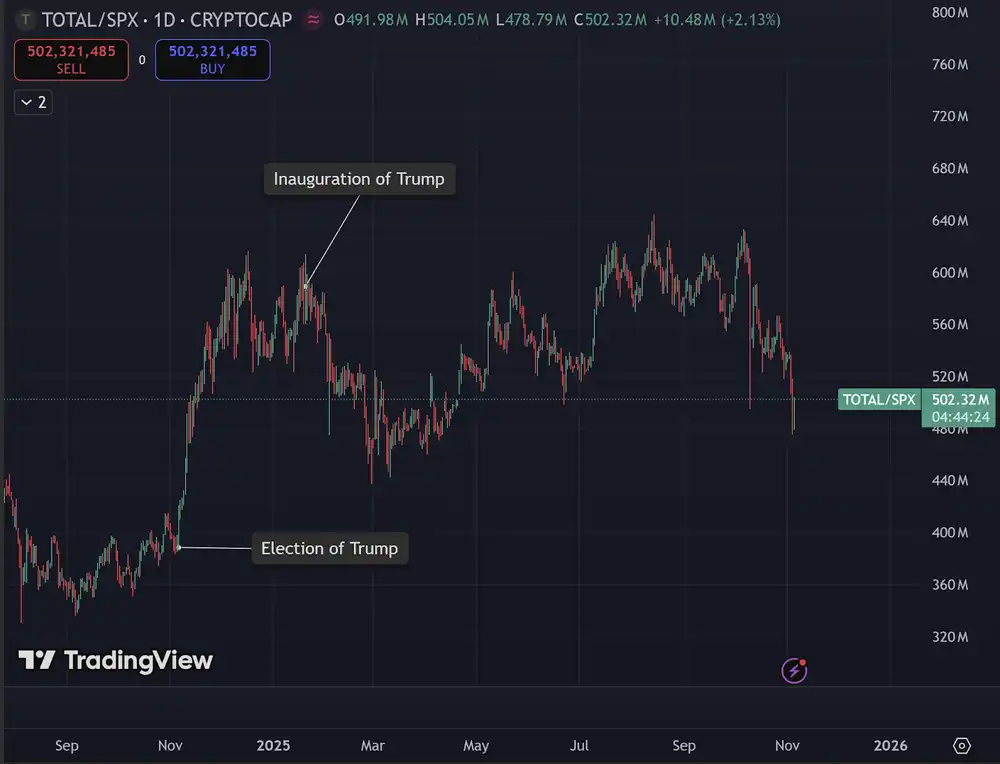Original Title: Why Did Crypto Sentiment Get So Bearish?
Original Author: Jack Inabinet, Bankless
Translator: Peggy, BlockBeats
Editor's Note: Just four days after Bitcoin reached an all-time high, the crypto market faced an unprecedented "10/10 flash crash," with not only mainstream coins plummeting but also several altcoins going to zero, and exchanges falling into a liquidation crisis. Meanwhile, high-leverage yield funds like Stream Finance faced consecutive explosions, revealing the fragile nature of the "trust me" bubble. Optimism on social platforms quickly turned to panic, and market confidence was severely damaged.
This article reviews the series of events and attempts to answer a key question: Why did crypto market sentiment suddenly turn so bearish? In the midst of a bubble burst and a crisis of trust, we may be standing at a turning point of a new cycle.
The following is the original text:
On Monday, October 6, 2025, Bitcoin hit a new high, breaking the $126,000 mark for the first time. Whether in the trenches of Crypto Twitter or in the newsrooms of CNBC, holders were immersed in an omnipresent "fog of hope."
Despite little change in the fundamentals over the following month, just four days later, on October 10, the crypto market faced a crisis—the "10/10 flash crash" is now regarded as the largest liquidation event in crypto history.

In this catastrophic decline, mainstream coins fell by double digits, many altcoins went to zero, and several exchanges were on the brink of bankruptcy (almost all mainstream perpetual contract platforms triggered automatic liquidation mechanisms due to an inability to pay short profits).
Although Trump's election as president was seen as a positive for the crypto industry—from establishing a strategic Bitcoin reserve to appointing seemingly pro-crypto regulatory officials—crypto asset prices continued to languish.
Aside from a brief uptick following Trump's election in November last year, the ratio of the total market cap of crypto (TOTAL) to the S&P 500 index has remained stable for nearly a year. In fact, since Trump officially took office on January 20, this ratio has even shown a remarkable negative growth.

As the market continued to digest the aftermath of the 10/10 liquidation, more and more questions began to surface.
Just this Monday, Stream Finance announced bankruptcy. This was a "trust me" type crypto yield fund managing $200 million, relying on leverage to provide depositors with returns above the market. Its "external fund manager" lost about $93 million in assets during operations.
Although details have yet to be disclosed, Stream is likely the first "Delta neutral" strategy fund to publicly explode due to the automatic liquidation mechanism on 10/10. Despite its structure having long raised questions, this collapse still caught many lenders off guard—they chose to sacrifice safety for higher returns without clear risk signals.
After Stream's explosion, panic quickly spread throughout the DeFi ecosystem, and investors began to collectively withdraw from similar high-risk yield strategies.

Although it appears that the chain reaction from Stream has not fully spread, this incident exposed the risks of the increasingly popular "circular stablecoin mining" strategy in DeFi—using existing high-risk strategy deposit certificates to leverage for higher returns.
Stream's disclosed losses also revealed the potential massive losses that Delta neutral funds could face during the 10/10 automatic liquidation: short hedges were forcibly canceled by the system, while spot longs went to zero in an instant.
Although news headlines have shifted, it is certain that the losses on October 10 were catastrophic.
Whether through public operations in DeFi or secret operations in CeFi, there are billions of dollars in leverage within crypto yield funds. Whether the market has enough liquidity to cope with potential future waves of liquidation remains uncertain.
It is still unclear who is "swimming naked," but it is certain that some in the crypto casino are already without swim trunks. If the market falls again, especially after lawsuits alleging that centralized exchanges were insolvent during the 10/10 liquidation, the question will no longer be "Will something go wrong?" but rather "Can the entire industry withstand it?"
免责声明:本文章仅代表作者个人观点,不代表本平台的立场和观点。本文章仅供信息分享,不构成对任何人的任何投资建议。用户与作者之间的任何争议,与本平台无关。如网页中刊载的文章或图片涉及侵权,请提供相关的权利证明和身份证明发送邮件到support@aicoin.com,本平台相关工作人员将会进行核查。



